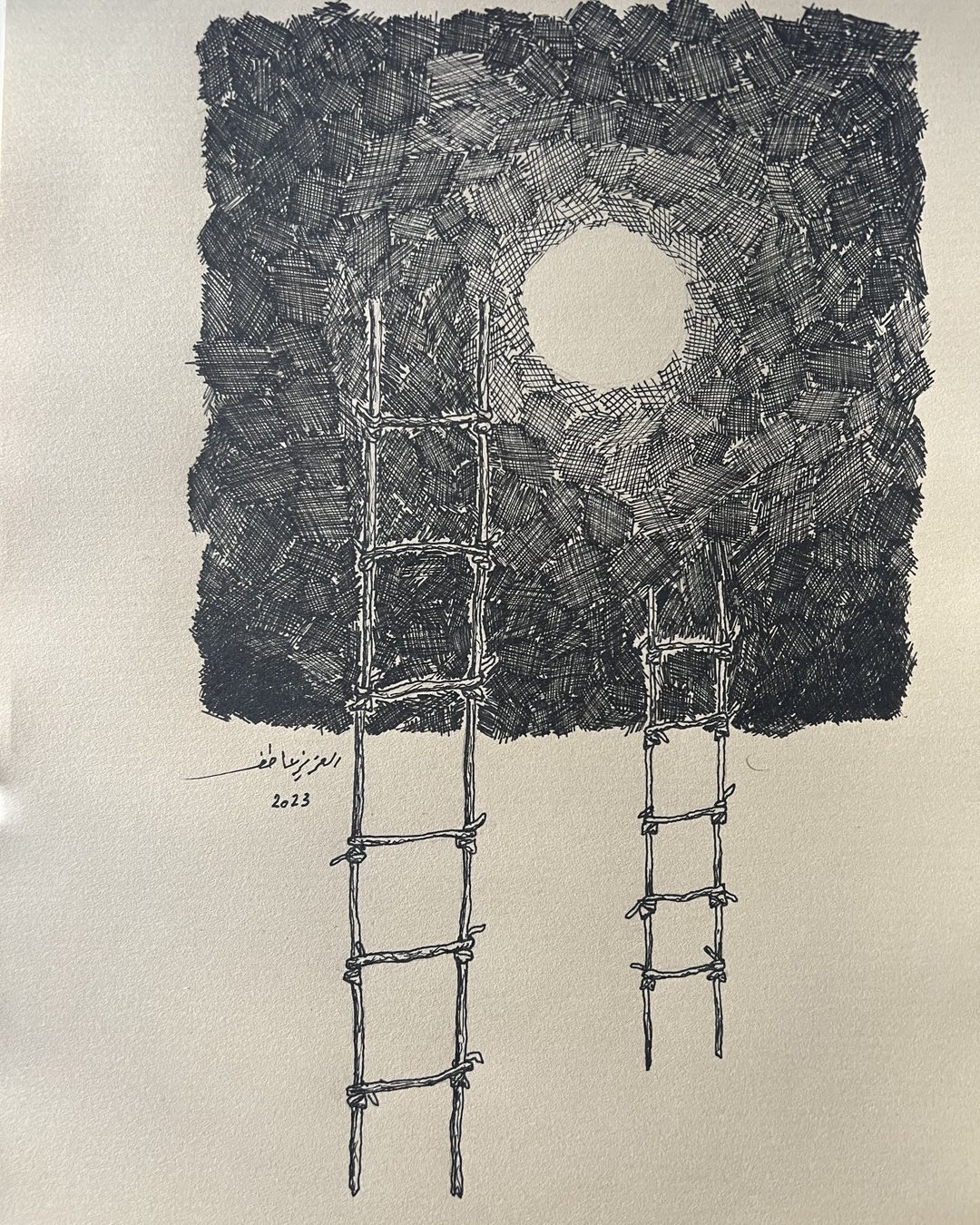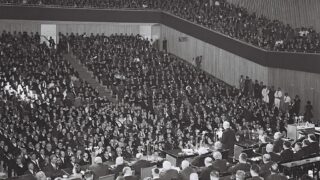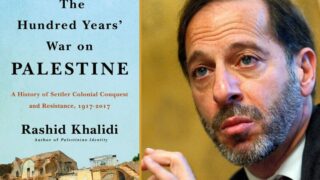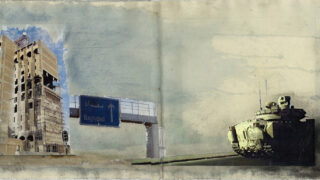Palestine boasts a long history of intellectual and policy struggle of ideas, from its earliest organic ties to post-1948 revolutionary movements, and dominated for much of the past 30 years by the intimate involvement of BWI in Palestinian economic and social policy making. It became the task of heterodox Palestinian economics, mainly non-Marxian, to not only critique the mainstream, and explain why neoliberal recipes were misguided for such a war-torn economy. No less challenging to the new Palestinian political and development economics was to build a reasonable counter narrative and feasible set of alternative policies, drawing on successful heterodox developing countries experiences, something that is less facile. Here is where I think the potentially radical intersection lies, between the study of global socialist and anti-colonial experiences, the democratic critique of capitalism and a reasonable and feasible set of heterodox development policies that can gain traction and credibility in the world as it is, at least intellectually if not in practice.
What can we learn from the modern history of Palestinian political economy of a continuous struggle against domination by alien colonial economic and political powers?
I outline my understanding of this this from four angles, before examining how this might fit into the recent genocidal war against Palestine.
First - To comprehend the shape, meaning and function of Palestinian political economy under colonial domination in today’s turbulent world, two parallel historical processes should be kept in reference. These have proceeded apace for a century, sometimes overlapping, sometimes complementing and even contradicting each other:
-
A fundamental, apparently existential struggle between two implacable foes:,
- on the on hand, an ever-expanding Zionist nation-state project, currently defined as intended to ensure the sovereignty of the Jewish people in the whole of “the land of Israel”, and entailing a set of systematic measures of military occupation, colonization and settlement, economic resource extraction,
- confronting an unfulfilled Palestinian aspiration for national self-determination entailing a range of violent armed, mass, legal and diplomatic resistance in different forms in each epoch of struggle;
- The “normal” processes and stages of economic growth, market economics, capital and class formation, liberalisation and financialistion, and an uneven development that emerged impressively within the Israeli Jewish economic metropole, but in distorted, asymmetric patterns within the Palestinian periphery economies in its midst.
Second – the changing political economy of Palestine has followed both those trajectories, is in fact the synthesis of their interaction and contradictions. This has meant that the imperatives of national self determination as expressed in statehood have regularly trumped those of economic development or social justice for Palestinians, though these issues are no longer far from the surface of popular discontent. For Palestinians, a frustrated movement of national self determination (the so-called primary contradiction in liberationist ideology) continues to take precedence over denial or delay, of the achievement of human, social, and economic rights of 7 million of Palestinians under occupation and in Israel – the so-called secondary contradiction. In Israel as well, the full potentials of liberalization and even more economic accumulation have been systematically constrained and undermined by the ideological interests of upholding a system of differential rights viz the dependent Palestinian economies, including Palestinian Arab citizens of the state. Even the imperatives of liberal capitalism cannot trump those of Zionism.
Third – The PE of Palestine is thus not a stable trajectory or always the outcome of a struggle between the same powers or parties. Indeed, we must always avoid complacency in our analyses of PE dynamics, stakeholders and and interests whereby the best laid plans and strategies can be rended asunder by the tensions and contradictions lurking beneath the surface of an otherwise placid landscape. We learnt this bitter lesson dramatically since 2023, whereby well rooted assumptions about the permanence of the status quo of conflict management seemed the logical outcome of the no war no peace paradigm in play since 2005.
Taking the longer view as it appeared until October 7, we can discern four broad phases in the PE of Palestine, separated by major shocks that resulted in a significant reshuffling of the battlefield at each phase:
- Pre-1948 Palestine: in which the core powers of the respective national movements and economic structures emerged. These were already lopsided in favor of the powerful impetus of the Jewish economy and Zionist political goals, shepherded by British colonial rule, leading to the 1948 Nakba. The so-called dual economy (industrialising, Jewish, modern and agrarian, Arab, poor) was, in the days before Raul Prebisch and Samir Amin, the forerunner of today’s center-periphery structural economic relations and uneven development that continue to underpin Israeli political and economic supremacy in Palestine, though on a more aggressive and oppressive scale.
- The 1948-1967 period: was one of Jewish state building and socialist market management economy amidst Palestinian demographic dispersion, material dispossession and political fragmentation. Half of the people had become refugees in five Arab “host countries”, others fell under Israeli, Jordanian and Egyptian rule. This uprooting and dispersion disrupted for the still-forming Palestinian nation any pre-1948 possible trajectories of capital accumulation, class formation or development in the conventional sense of the terms.
- The post-1967 decades witnessed expansion of effective Israeli sovereignty throughout the breadth of Palestine, ushering in a period of military occupation and direct rule over Palestinians in WBGS. This entailed a new set of economic dependencies (labour, trade, fiscal flows and monetary issues), even as a unified Palestinian national movement was consolidated outside Palestine. This entailed a first elaboration of a set of national liberation goals and coherent strategies (secular democratic state), and a strategy of armed resistance from outside and inside Palestine, with significant regional and international spillovers. Twenty years after 1967, with the PLO outside at its weakest, the first intifada broke out posing the first significant challenge to indefinite Israel occupation and signaling an end to the façade of benevolent colonial rule.
- The thirty years since the Oslo Accords of 1994: whereby Israel appeared to be ready to compromise on its claim over all of Palestine and accept Palestinian national rights, was the beginning of another prolonged phase of a more sophisticated interplay between the politics and the economics of Palestine, one which was enshrined in an Israeli policy of asymmetric containment which successfully postponed October 7 by some thirty years, and during which an aggressive and overwhelming settler colonial project unfolded in Jerusalem and the rest of the West Bank.
Fourth- While the earlier experiences remain rich material for deeper study of Palestinian economic history, it is this most recent phase that ended on October 7, and the new era in the political economy of Palestine that has come since, that I wish to focus on for the remainder of my presentation. The past two years have entailed tectonic shifts in the Palestinian-Israeli balance of power, brought about partly through the shock suffered on October 7 by the Israeli people and their hitherto unshakeable faith in the State’s security doctrine. But since then, Israel’s brutal and bloody response revealed to the peoples of the world what twenty-first century Zionism really looks like and has given the cause of Palestine unprecedented sympathy, credibility and renewed political power.
The pitfalls of Oslo as understood in 2023
Had I addressed this subject a few years ago, I would have said that the economy of Palestine had become deeply mired in the unintentional but inevitable fallout from the asymmetric relation it had been locked into by the Oslo Accords, and that the only policy horizon was one of resilience in the face of prolonged occupation, settlement expansion and de-facto annexation by Israel of the remainder of Palestine. The period between 1994 and 2023 may not have been immutable or unchanging structure and had its own separate phases. But the overriding constant was Israel’s ability to manage an assymetric conflict without having to move towards peace with Palestine, indeed by openly repudiating a two-state permanent status agreement even as the PLO continued to insist on that outcome.
- The years until the 2nd intifada of 2000 were hopeful, still premised on such a solution. But once Rabin had been eliminated from the Israeli political scene and the rise of revisionist Zionism of Netanyahu had begun, the expected establishment of a sovereign Palestinian state was repeatedly delayed and eventually removed from the agenda of the possible.
- After the Palestinian political division began in 2006 and Gaza was beseiged, the international community reinterpreted the terms of the Oslo compromise into an agenda of security coordination with Israel, public institutional reform and neoliberal economy building, as a precondition of proving Palestinian “eligibility” for statehood.
- By the time the pretense of a peace process was abandoned after 2015 with the full assumption of power in Israel, and throughout the state’s institutions, by a series of increasingly extreme right-wing coalitions, economic structural dependencies had cemented the divided, besieged and flailing five Palestinian regional economies within Israel’s orbit (WB GS, EJ, AreaC, Israel). As colonial expansion and religious-nationalist neo-Zionist settler aggression intensified, a system of violent and discrete enforcement of differential rights in the one-apartheid-state reality, legally, politically and economically, had emerged.
For many scholars of the Palestine economy, the most appropriate theoretical and comparative empirical framework for analyzing these complex relations was that of settler colonialism studies. Other Marxist analyses attempted to unpack Palestinian class and capital relations and examine their interrelations with those of settler colonialism. The liberal analysis of Israel continues to focus on “occupation”, without recognising the more pernicious impact of settler colonial domination of all facets of the life of every Palestinian.
My own work has led me to question the obsession with the whole “national self determination” paradigm, as first elaborated by VI Lenin and subsequently reiterated in most anti colonial struggles. According to this enduring doctrine the necessity of establishing the nation state took precedence over achieving social and economic rights, and postpones the class struggle and building of socialism, which could only take place in the context of the nation state. In the Palestinian case, the sacrosanct status of the struggle for “the State” has meant failure on both the national and class liberation fronts.
So what is new in the political economy of Israeli domination?
I conclude by noting that the October 7 attack on Israel and its genocidal response, confirms that asymmetric containment has failed, and is no longer an option. Hence, the Israeli Neo-Zionist leaders such as Smotrich and Ben Gvir may well hallucinate along with Donald Trump and Jared Kushner of imperial capitalist real estate designs on the Gaza Strip. But that happens to entail ethnic cleansing and denial of all imaginable rights of the Palestinian people, something that Gaza and Palestinians have shown they can resist and that it seems, and we can only hope, the world will no longer tolerate or normalise.
Actually the new phase we have entered since 2023 is beyond political economy. There is no “political economy” of genocide, there is only resistance and survival, which presumably would mean defeating the genocide, not letting it pass and pushing back against the latest manifestation of a settler colonial rule on steroids. This is first and foremost a task for the Palestinian people, one that remarkably they have achieved in Gaza despite the horrible losses and terrible costs, that for the past year has steadily intensified in the West Bank. But they cannot continue alone, more is yet to come as surely Israel’s raw thirst for domination will not be easily put back on the shelf. The neo-Zionists in power will not go quietly into the night.
It Is Not Just About Gaza and Palestine
18-01-2025
So we are in a new phase where political economy can only explain so much, and until the full struggle has played out over the coming years and the latest version of Israeli aggression firmly repudiated, there is not much that we can learn from economics, since as the Poet would say: you don’t need a weatherman to tell you the way the wind is blowing…
*Statement delivered to "Economy of Genocide Conference" organised by MENA Initiative, at Geneve Graduate Institute, 11 November 2025.







